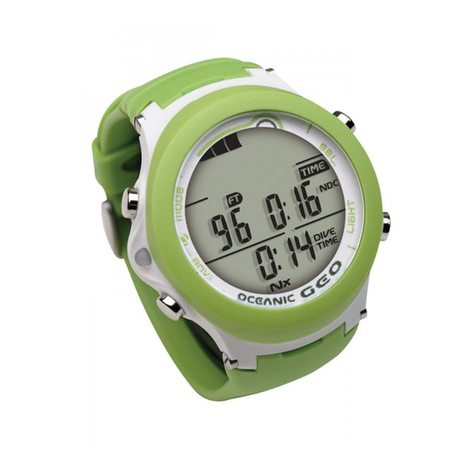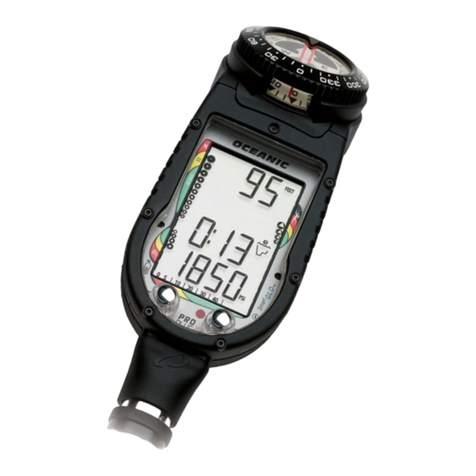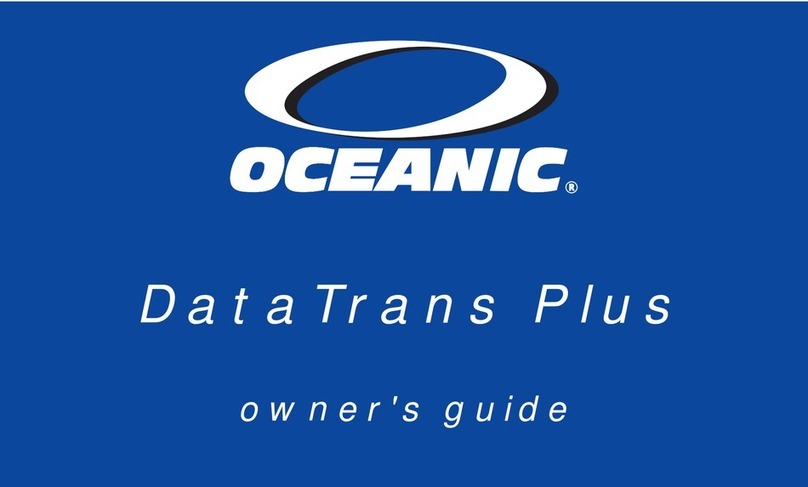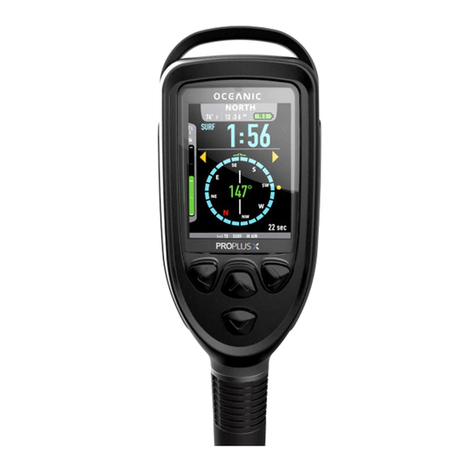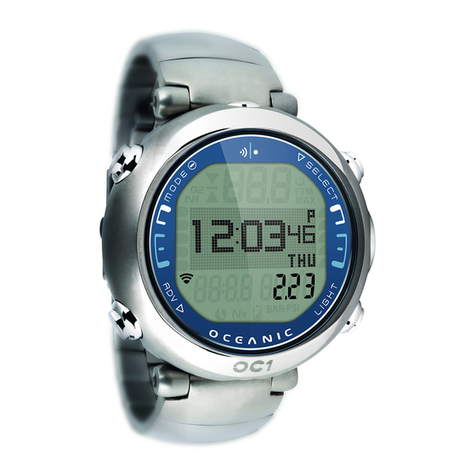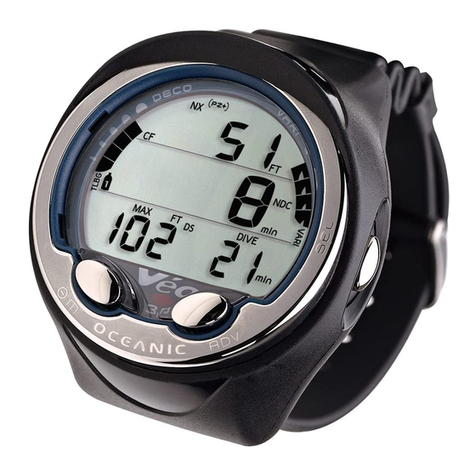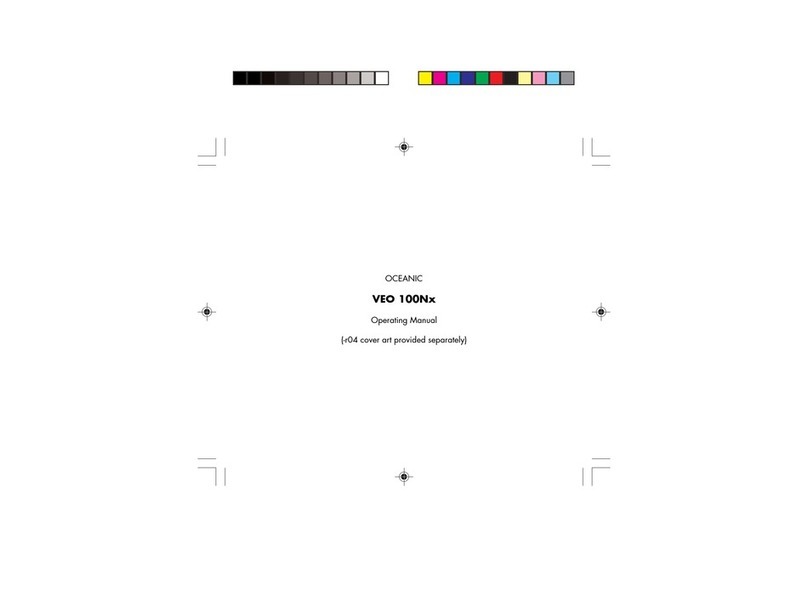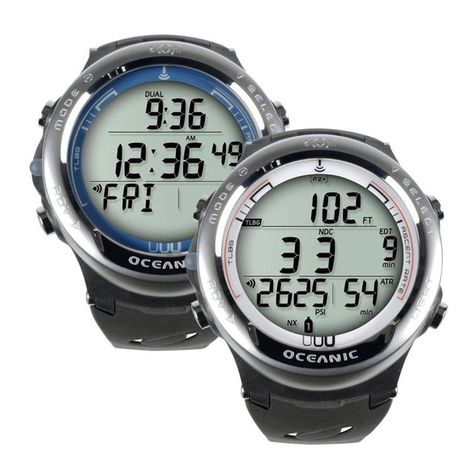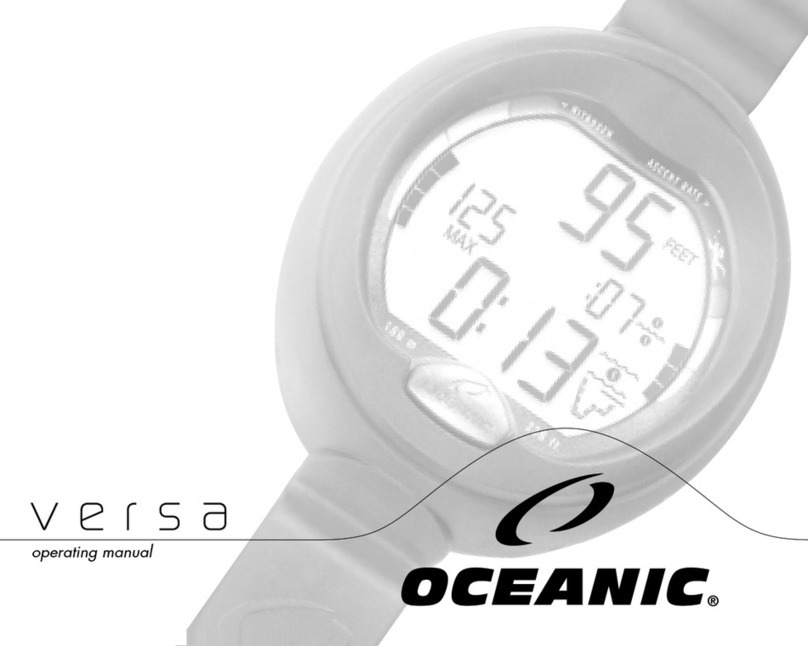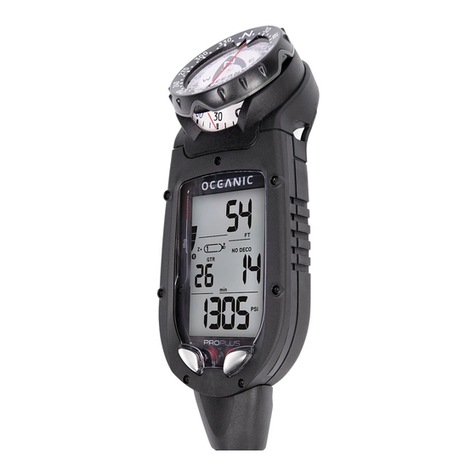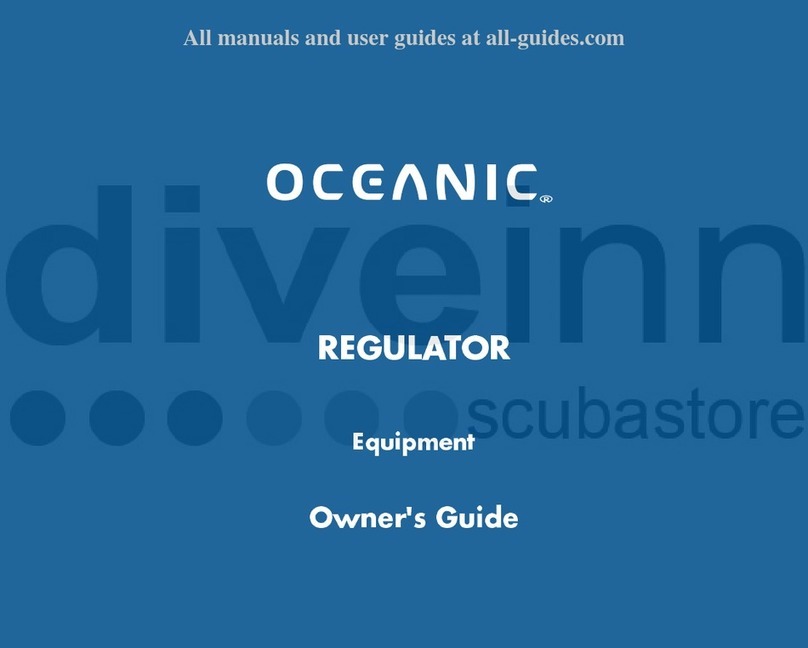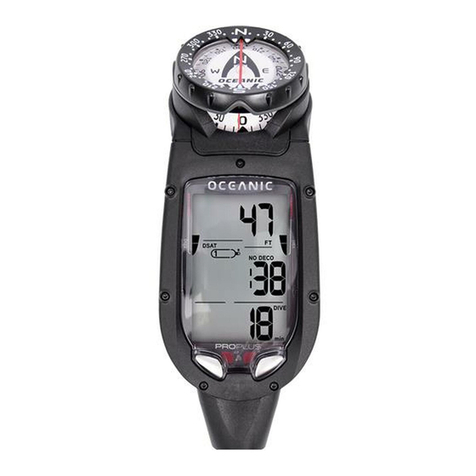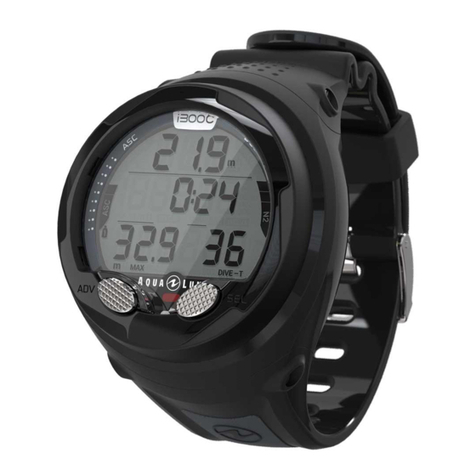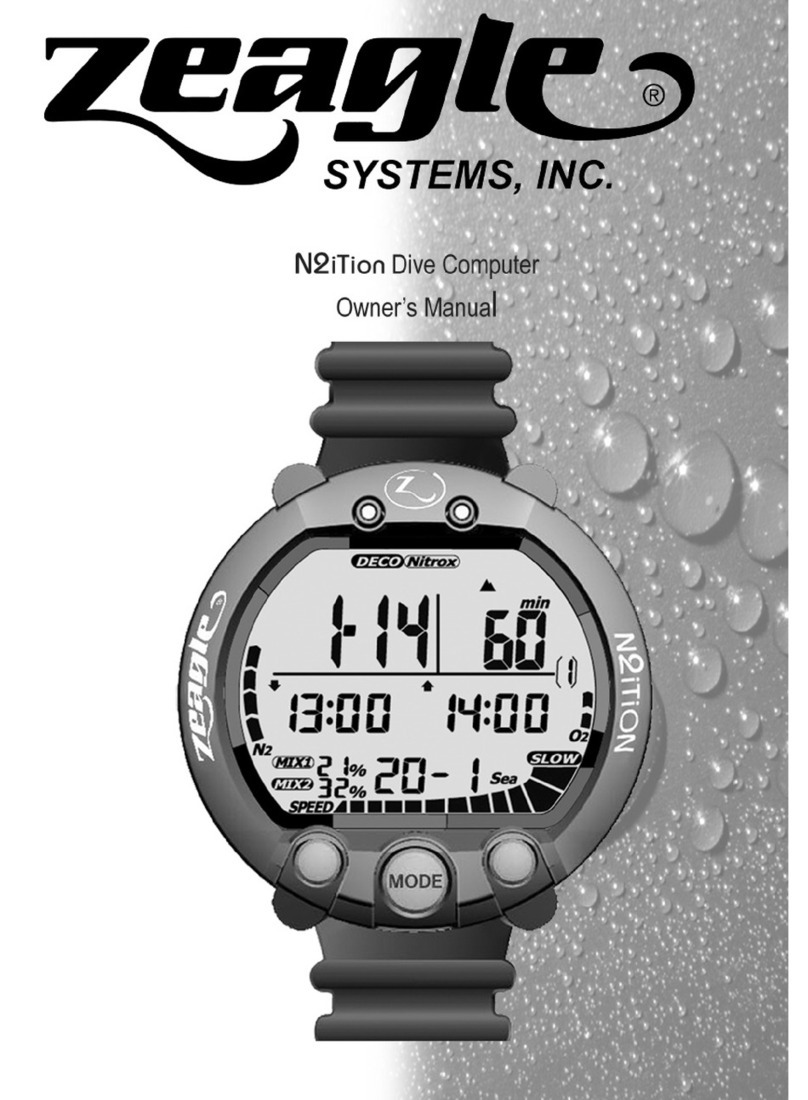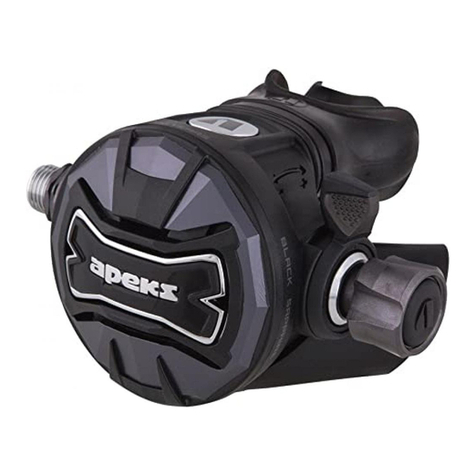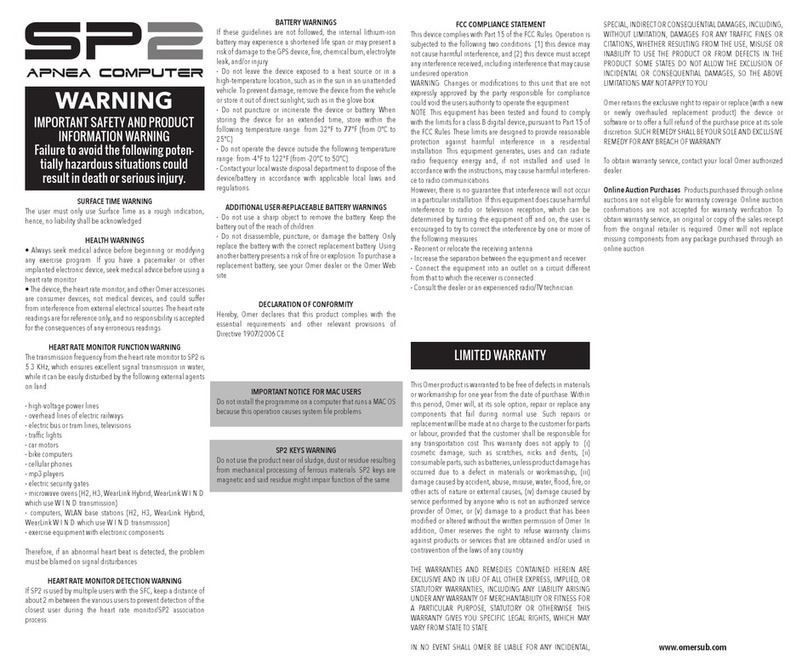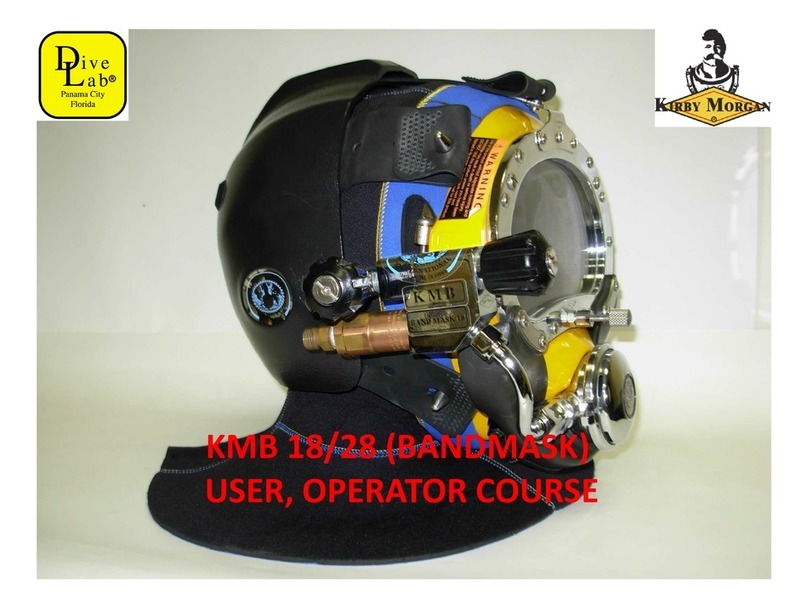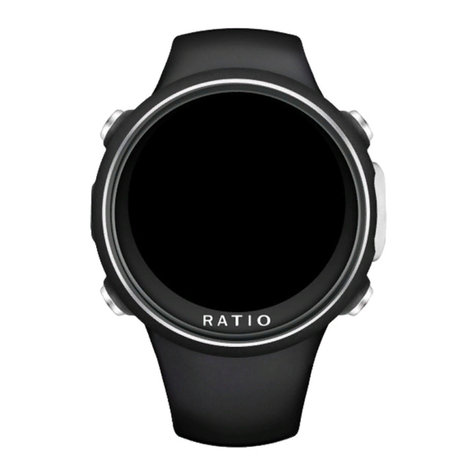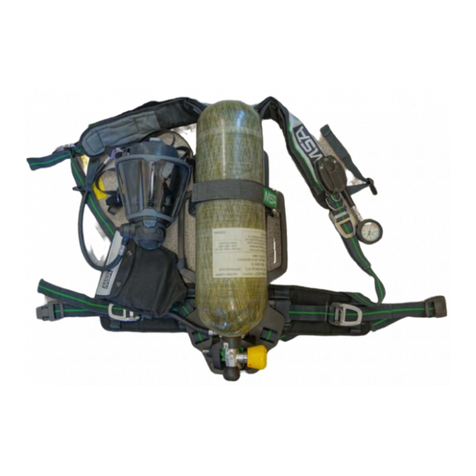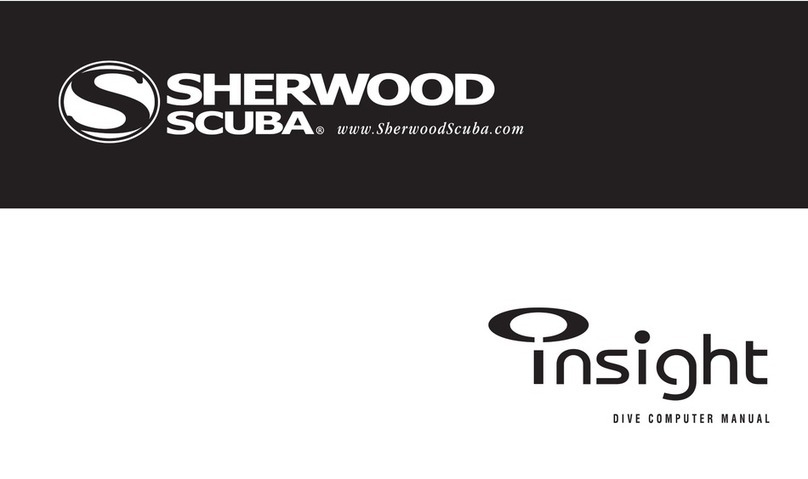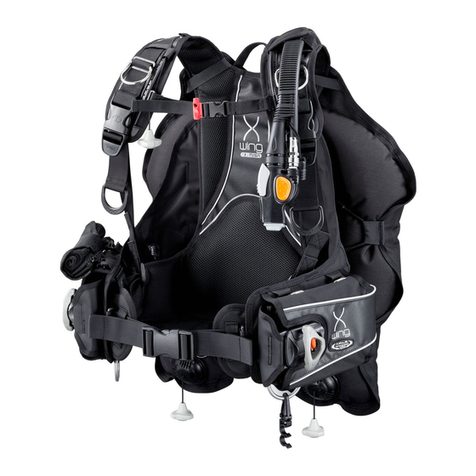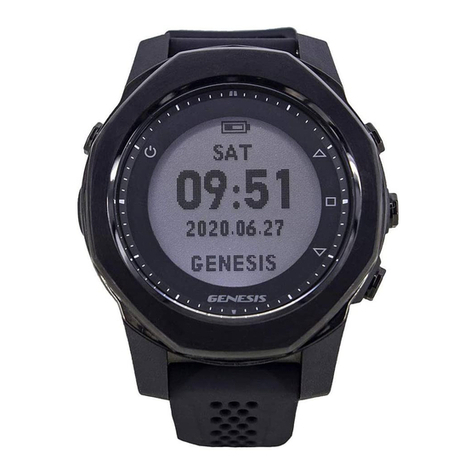
2
Oceanic Regulator
Pay special attention to items marked with this Warning Symbol.
WARNIN S:
This Regulator product is intended for use by recreational divers
who have successfully completed a nationally recognized course in
scuba diving.
It must not be used by untrained persons who may not have knowl-
edge of the potential risks and hazards of scuba diving.
It is NOT intended for use by military and commercial divers.
This Regulator must be used together with an Instrument that mea-
sures and indicates the user's air supply pressure.
As with all underwater life support equipment, improper use or mis-
use of this product can cause serious injury or death.
Read and understand this Owners uide completely before diving
with this Regulator.
If you do not fully understand how to use this Regulator, or if you
have any questions, you should seek instruction in its use from your
Authorized Oceanic Dealer before you utilize this product.
Prior to each dive inspect and test this regulator for proper opera-
tion. If any part does not function properly, DO NOT USE!
Oceanic promotes responsible diving practices and does not advocate diving
beyond the limits recommended for recreational diving, Oceanic regulator
equipment is designed to offer continued safe and reliable performance in the
event the need arises and the recreational diving limits are exceeded.
Oceanic regulators are only CE certified to a maximum operating depth of 50
meters (165 feet).
COPYRIGHT NOTICE
This owners guide is copyrighted, all rights are reserved. It may not, in whole or in part, be copied, pho-
tocopied, reproduced, translated, or reduced to any electronic medium or machine readable form without
prior consent in writing from Oceanic / 2002 Design.
Oceanic Regulator Owner's Guide
Doc. No. 12 2018
© 2002 Design 1996
San Leandro, CA USA 94577
TRADEMARK NOTICE
Oceanic, the Oceanic logo, DX4, DXi, PX2, SP4, CDX, Omega, Delta, Sub Zero, Alpha, Gamma, Zeta,
SlimLine, Swivel 180 Octo, Explorers, Air XS, and DataLink are all registered and unregistered trademarks
of Oceanic. All rights are reserved.
PATENT NOTICE
U.S. Patents have been issued to protect the following design features: Orthodontic Mouthpiece (U.S.
Patent No. 4,466,434) and Second Stage Regulator (Delta) Depth Compensating Adjustment Mechanism
(U.S. Patent No. 5,660,502).
LIMITED TWO YEAR WARRANTY
For details, refer to the Product Registration Card provided by your Autorized Oceanic Dealer. For addi-
tional information, visit the Oceanic web site at -
http://www.OceanicWorldwide.com

